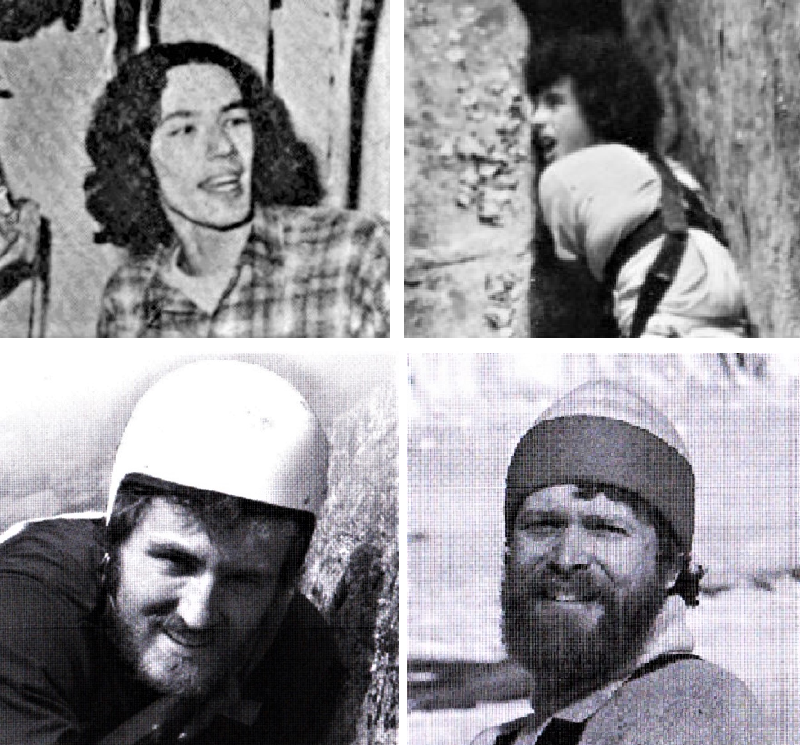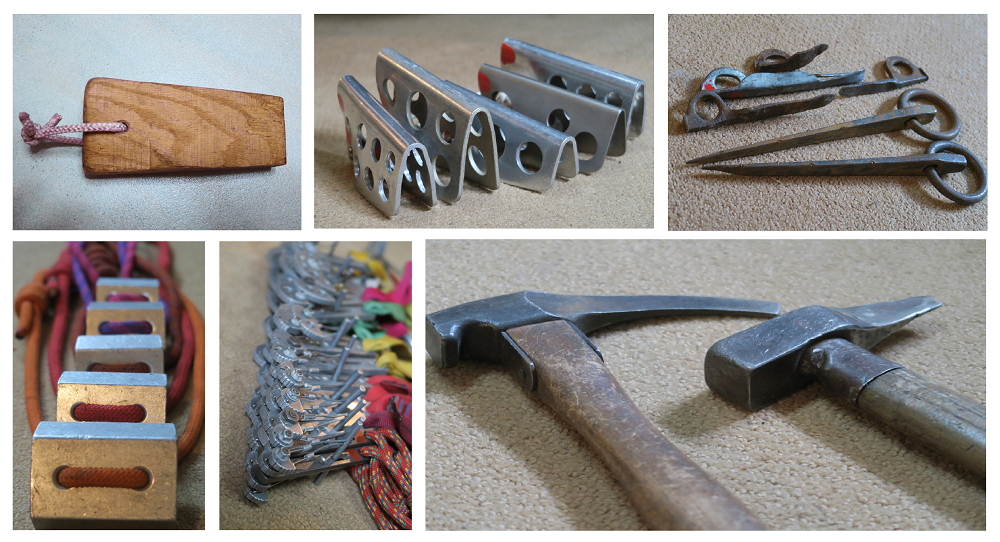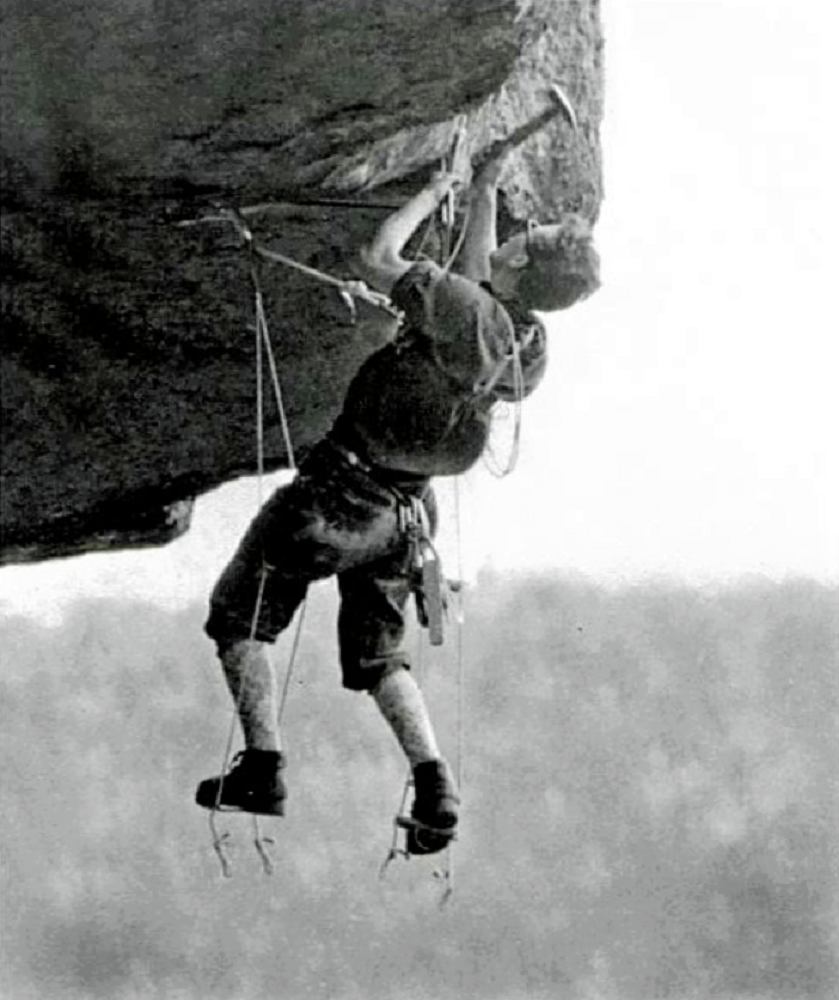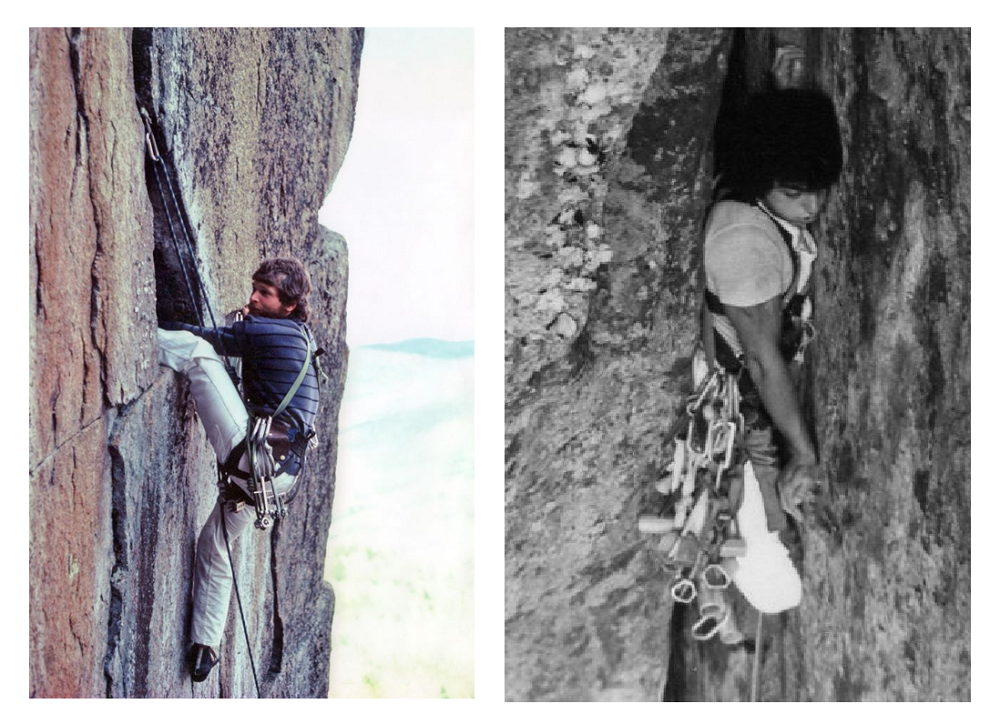The Rebels Take Over!
In Québec until 1969, local climbers could not compete with what was being done elsewhere in the world. Equipment had not been developed very much, but the true brake on being able to advance further was psychological in nature. A firmly-believed myth circulated in the local climbing community. It had been established by the preceding generation that there was a limit to “free climbing,” beyond which it was impossible to go. This new frontier could not be overcome by physical means alone.
Indeed, in those years, a successful climb of any difficult route meant holding on and pulling on the equipment already installed in fissures in the rock face. This method was known as artificial rock climbing. This common practice used by climbers to progress upwards by hanging from or climbing on their equipment was also used in Val-David.
FREE CLIMBING – UNCOVERING THE NATURAL FEATURES OF THE ROCK
In contrast, free climbing consists of climbing on the rock by holding onto or gripping natural features in the rock face as you move, but without using any equipment. So, unlike the artificial technique, the free climber only uses a rope and other safety equipment to prevent injury in case of a fall, or when suspended from an anchor point.
In 1970, mastering free climbing became the objective of a small group of anti-conformists who decided to make an assault on the rock faces of Val-David. Although having qualified under the FCMQ, they wanted to do things differently and were bent on taking rock climbing to new limits beyond those set by their mentors. Thus they began to free climb and showed it was possible to do so on nearly every route in our region.
These rebels were mainly from Montreal, although one or two were born in Val-David. The sons of pioneers, together with their buddies from university, their exploits led them to completely ignore the fixed ideas of the past.
BUSINESS IN THE VILLAGE PICKS UP AND DIVERSIFIES
The techniques, tools and strength of the climbers improved to the point that they were reaching levels of difficulty once unequaled in Val-David. With growing confidence and energy, these daring climbers provided inspiration for many of the others.
In consequence, business in the village began to adapt to the needs of these rock hunters. Val-David took on such an allure due to these athletic rock climbers, that rock-climbing schools came to the village each season or established themselves locally to offer courses. In addition, several shops selling outdoor gear opened for business.
A member of this group of rebels who had a major influence on the tourism aspect of rock climbing in Val-David is without doubt Paul Laperrière. With his climbing school, Passe-Montagne, and acute sense of organization, Paul introduced countless climbers to the sport and opened hundreds of routes from 1969 until well into the 21st century.





